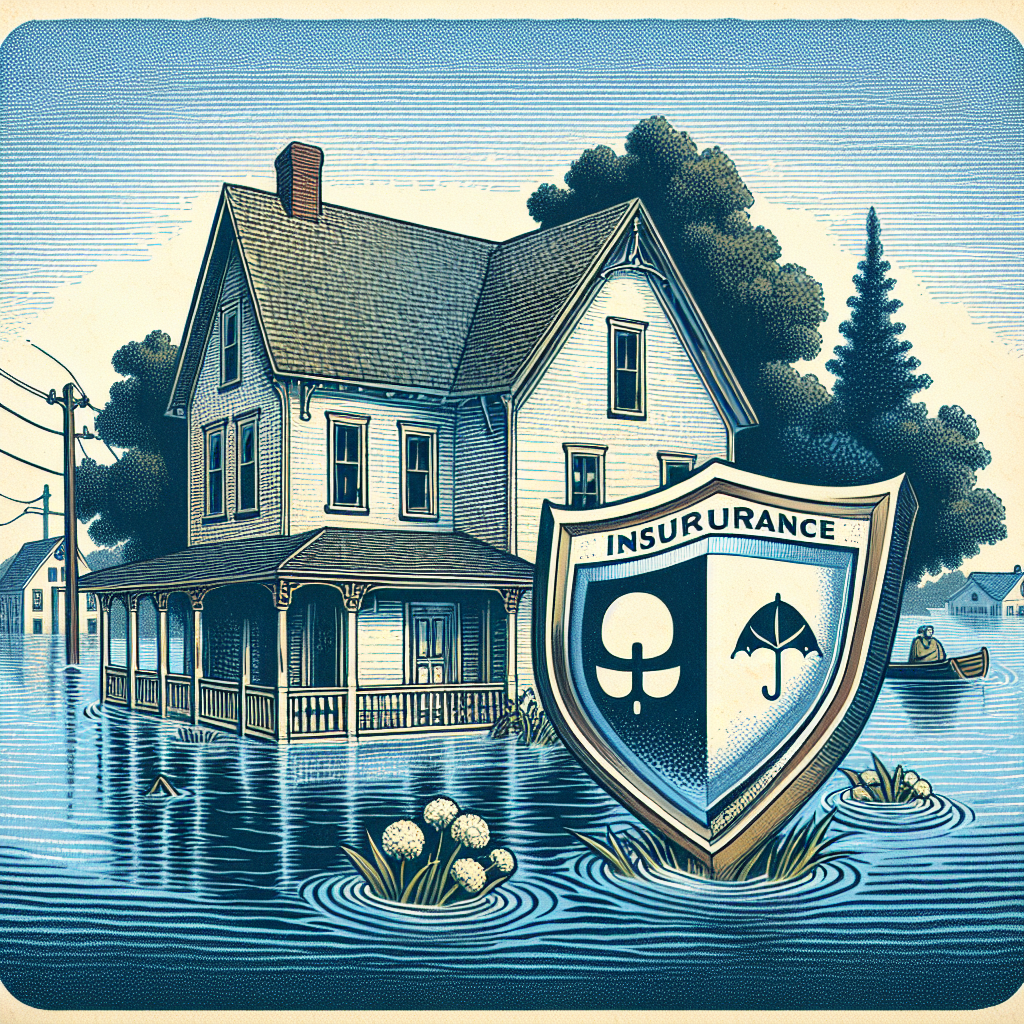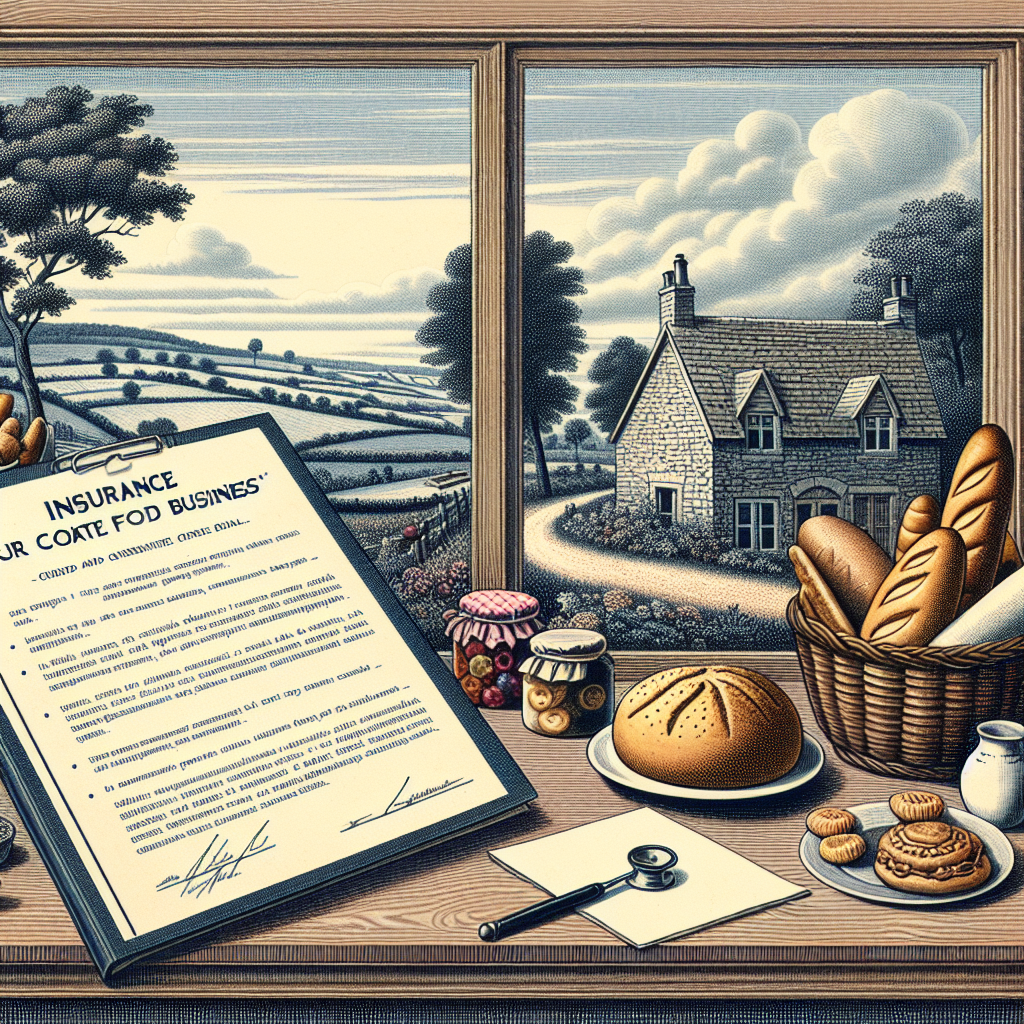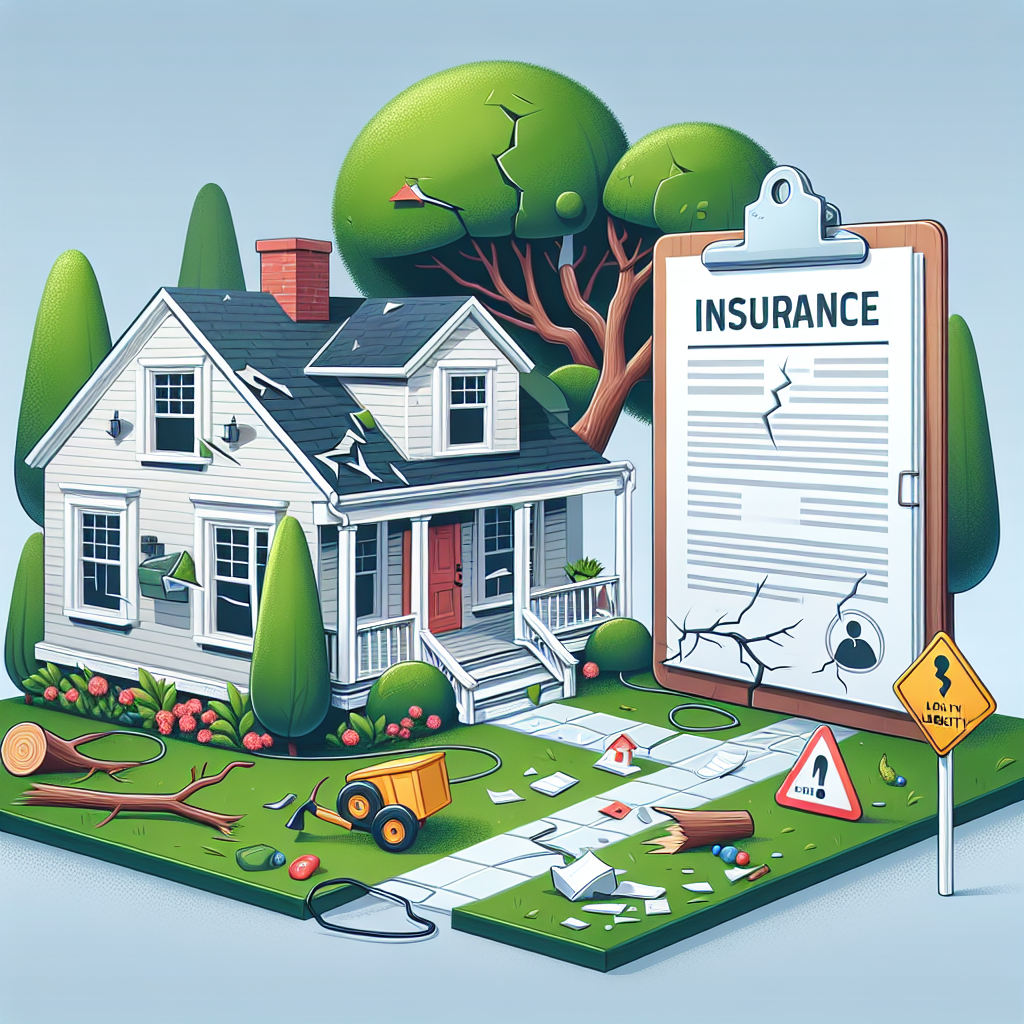Filed under Home Insurance on
Flood Coverage Home Insurance Guide: What You Need to Know

Flooding is the most common and costly natural disaster in the United States, and yet it is also one of the most misunderstood when it comes to insurance. Many homeowners discover too late that a standard home policy does not cover flood damage. This article offers a practical, plain-English overview of how flood insurance works, what it covers, how much it costs, and how to make smart choices before the water rises. Think of it as your Flood Coverage Home Insurance Guide: What You Need to Know, built to help you protect your biggest investment with confidence.
Flood vs. Water Damage: Why the Difference Matters
Insurers define a flood as water covering at least two acres of land or affecting two or more properties from overflow of inland or tidal waters, unusual and rapid accumulation of surface waters, mudflows, or collapse/subsidence of land along a body of water. By contrast, a burst pipe or a roof leak is not a flood—those fall under typical homeowners policies, depending on the cause and your endorsements.
This distinction is crucial because most home policies exclude floods entirely. If water enters your home from outside and inundates the ground around you, you need a separate policy—either a federal National Flood Insurance Program (NFIP) policy or private flood coverage—to be protected. For many households, pairing a standard home policy with flood coverage home insurance is the only way to build a resilient safety net.
How Flood Insurance Works
Flood insurance is available through two main channels: the NFIP, administered by FEMA, and private insurers. You can buy an NFIP policy directly through licensed agents, often branded by familiar carriers but backed by the federal program. Private carriers also underwrite their own flood policies, which can offer broader limits or features not available through the NFIP.
NFIP Basics
- Coverage limits: Up to $250,000 for the building and up to $100,000 for contents in residential policies. You can buy one or both. For higher-value homes, excess flood policies from private insurers can extend these limits.
- Waiting period: A standard 30-day waiting period applies from purchase to effective date, except for certain lender-required transactions.
- What’s covered: The building structure (foundation, electrical, plumbing, HVAC, water heaters, permanently installed carpeting, built-in appliances, and unfinished basement items like furnaces), and contents if you add that coverage (furniture, electronics, clothing, rugs, and certain appliances).
- Basements: NFIP limits what counts in basements and below-grade areas. Items like finished walls, flooring, and personal property in a basement may not be covered. Mechanical systems are typically covered.
- Loss settlement: Primary, single-family residences meeting conditions may receive replacement cost value (RCV) on building coverage. Contents are paid at actual cash value (ACV), meaning depreciation applies.
- Additional living expenses: Not covered by NFIP. If you need to live elsewhere during repairs, those costs are out-of-pocket unless you carry private flood coverage that includes them.
- Increased Cost of Compliance (ICC): Up to $30,000 to help meet local mitigation requirements (elevating, relocating, demolishing) after substantial damage in a Special Flood Hazard Area, if your community participates.
- Detached structures: A detached garage used for parking or storage may be covered up to 10% of the building coverage limit; this reduces the main building limit available.
Private Flood Insurance
The private market has expanded, offering flexible underwriting, higher limits, and optional features. Many private policies can include additional living expenses, coverage for temporary measures like sandbagging, shorter waiting periods, and broader basement coverage. Pricing can be more competitive for homes outside high-risk zones or those with mitigation features.
However, terms vary widely among insurers. Some private carriers use sophisticated catastrophe models to price risk; premiums can change as new data emerges. When a mortgage in a high-risk zone requires flood coverage, ensure the private policy meets lender and regulatory standards. Ask your agent to confirm that it’s acceptable for your loan type before switching from an NFIP policy.
Do You Really Need Flood Insurance?
Yes, if your lender requires it, and often yes even if they don’t. According to FEMA, more than 20% of NFIP claims historically come from properties outside high-risk flood zones. Climate trends show heavier downpours and more frequent flash flooding in many regions. Urban development can also increase runoff, overwhelming storm drains and causing street or yard flooding that ends up in basements.
Assessing risk involves more than checking a single FEMA map. Consider a multi-layered approach:
- FEMA Flood Insurance Rate Maps (FIRMs): Determine whether you are in a Special Flood Hazard Area (e.g., zones A or V) and whether your lender will require coverage.
- First Street Foundation’s Risk Factor and similar tools: Offer parcel-level insights on pluvial (rain-driven) flooding and future risk scenarios.
- Local data: Talk to neighbors, review municipal stormwater plans, and check historical flood events with local emergency management.
- Property specifics: Elevation relative to the Base Flood Elevation (BFE), drainage patterns, nearby creeks, and recent construction altering runoff.
Even if you’re outside a high-risk zone, the one-two punch of heavier rain and aging infrastructure makes a compelling case for flood coverage home insurance.
What Flood Insurance Covers and Excludes
Coverage can differ by policy, but these general rules apply:
Typically Covered
- Building: Foundation, walls, stairways, electrical and plumbing systems, HVAC, water heaters, permanently installed carpeting, paneling, and cabinets (limitations apply in basements).
- Appliances: Refrigerators, built-in dishwashers, stoves, and washers/dryers. In basements, coverage may be limited to essential systems.
- Contents (if purchased): Furniture, clothing, electronics, area rugs, and certain valuables up to category limits.
- Cleanup: Debris removal and reasonable efforts to protect the property, subject to policy terms.
- Sewer backup caused by flood: Covered under flood insurance if the proximate cause is a flood event.
Common Exclusions
- Additional living expenses and loss of income: Excluded under NFIP; some private policies may include.
- Basement finishes and most items below grade: Finished flooring, drywall, and personal property in basements often have limited or no coverage under NFIP.
- Outdoor property: Fences, decks, patios, landscaping, trees, wells, septic systems, pools, and hot tubs are typically excluded.
- Vehicles: Not covered; a comprehensive auto policy may cover flood damage to your car.
- Currency, stock certificates, and precious metals: Usually excluded or severely limited.
- Mold and mildew: Limited coverage; you must act quickly to mitigate damage.
Always read declarations and endorsements carefully. Private policies can be more generous in some categories, but exclusions are still common.
How Much Does Flood Insurance Cost?
Premiums vary widely based on your home’s flood zone, elevation relative to the BFE, foundation type, distance to water, local mitigation measures, and coverage limits. With FEMA’s Risk Rating 2.0 methodology now in place, NFIP premiums reflect more property-specific risk characteristics, such as distance to water sources, types of flood perils, and first-floor height.
General trends:
- Low-to-moderate risk zones: Often a few hundred dollars per year under NFIP, though prices vary by location and building attributes.
- High-risk zones: Can range from several hundred to several thousand dollars annually, depending on elevation and construction.
- Private market: Can be cheaper—or more expensive—than NFIP, depending on the model’s view of your risk. Homes with superior elevation or mitigation sometimes see significant savings.
Discounts and credits:
- Community Rating System (CRS): If your community participates in FEMA’s CRS by investing in flood mitigation, your NFIP premium may be discounted—sometimes by up to 45% in top-tier communities.
- Elevation Certificate: Documenting first-floor height relative to BFE can refine rating and, in some cases, reduce cost.
- Mitigation features: Flood openings, elevated mechanicals, and compliant enclosures can lower risk and premium.
- Higher deductibles: Reducing the insurer’s risk can trim premiums but increases your out-of-pocket share during a claim.
These levers make flood coverage home insurance more manageable for many households, especially when combined with community-level mitigation.
NFIP vs. Private: Key Differences to Weigh
- Limits: NFIP caps out at $250,000 for building and $100,000 for contents. Private carriers can offer higher limits or provide excess coverage.
- Waiting periods: NFIP usually requires 30 days; private insurers sometimes offer shorter waits, especially for new purchases or loan closings.
- Loss of use: NFIP excludes it; some private policies include temporary housing and extra expense coverage.
- Basement coverage: NFIP is strict; private policies may cover more, but terms vary widely.
- Portability and stability: NFIP is backed by the federal program and is guaranteed issue in participating communities; private carriers can enter and exit markets or non-renew based on risk appetite.
- Lender acceptance: Most lenders accept both if the private policy meets regulatory standards; always verify.
For many homeowners, a layered approach—NFIP for baseline coverage, plus private excess for higher limits—offers solid protection without overpaying.
How to Choose Coverage Limits
Start with a realistic reconstruction cost for your home, not the market price. Reconstruction often differs from purchase price due to materials, labor, and code upgrades. If your rebuild cost exceeds NFIP limits, consider private or excess coverage to close the gap. For contents, inventory your possessions room by room, then estimate replacement costs.
Key questions to answer:
- What is the cost to rebuild at today’s prices?
- How much personal property would I need to replace after a total loss?
- Could I afford temporary housing without coverage for additional living expenses?
- Are valuable items like art or jewelry limited by sublimits, and do I need separate coverage?
An agent experienced with flood coverage home insurance can help you set levels that align with your budget and risk tolerance.
Strengthening Your Home to Lower Risk and Premium
Mitigation pays off, both in safety and cost control. Consider these upgrades:
- Elevate critical systems: Move HVAC, water heaters, and electrical panels above the BFE or onto higher floors.
- Install flood openings: Properly placed vents help equalize water pressure and reduce structural damage in crawlspaces and enclosures.
- Use flood-resistant materials: Closed-cell insulation, tile or sealed concrete floors, and rot-resistant wall materials below the design flood elevation.
- Regrade and improve drainage: Swales, French drains, and gutter extensions can redirect water away from the foundation.
- Protect low-level entries: Backflow valves on drains, flood shields for doors, and sump pumps with battery backup.
- Limit enclosures below elevated homes: Breakaway walls and code-compliant storage spaces reduce damage and help with rating.
Keep documentation and receipts. Insurers and adjusters look favorably on homes with proven mitigation, and some private carriers price these improvements directly into premiums.
The Claims Process: What to Do Before and After a Flood
Preparation is the best insurance for your insurance. A small amount of planning can keep your claim organized and moving.
Before a Flood
- Document your property: Take photos or video walkthroughs of every room, including serial numbers for electronics and appliances.
- Save receipts and records: Keep proof of major purchases in a secure, cloud-based folder.
- Know your policy: Understand deductibles, coverage limits, and exclusions—especially for basements and contents.
- Plan for safety: Identify evacuation routes and keep essential documents in a waterproof bag.
After a Flood
- Report the claim promptly: Contact your insurer as soon as it is safe. Ask about advance payments if you need immediate help for cleanup.
- Photograph everything: Take wide and close-up shots before you move items. Save samples of damaged materials when reasonable.
- Mitigate further damage: Remove wet carpets and drywall, run dehumidifiers, and ventilate. Keep all receipts; reasonable mitigation costs are generally covered.
- Meet the adjuster: Walk them through the damage, share your inventory, and discuss pre-existing conditions and upgrades.
- File your Proof of Loss: NFIP requires a signed and sworn Proof of Loss within 60 days of the loss date unless FEMA extends the deadline for widespread disasters. Follow your policy’s timeline precisely.
- Review the estimate: Ask questions about depreciation, unit costs, and code upgrades. If you disagree, you may request a reinspection or use the policy’s appeal or appraisal process.
After major disasters, regulators and FEMA sometimes extend deadlines or permit expedited payments. Stay in close contact with your insurer, and keep a claim diary noting dates, names, and decisions.
Common Myths and Realities
- Myth: Home insurance covers flood. Reality: It almost never does; you need a separate policy.
- Myth: If I’m not in a high-risk zone, I don’t need coverage. Reality: A significant share of claims come from lower-risk areas where heavy rain overwhelms drainage.
- Myth: I can buy insurance right before a storm. Reality: Waiting periods apply—typically 30 days for NFIP—so plan ahead.
- Myth: FEMA will make me whole. Reality: Disaster assistance is limited and means-tested; grants are modest and loans must be repaid.
- Myth: Basements are fully covered. Reality: NFIP coverage for below-grade spaces is limited; check your policy.
Regulatory and Market Trends to Watch
- Risk Rating 2.0: FEMA’s pricing changes align premiums more closely with property-specific risk, altering costs for many policyholders. Some will see increases phased in under statutory caps, while others see decreases.
- Private market growth: More carriers are entering the space with flexible coverage and underwriting, offering competition and innovation.
- Climate impacts: Intensifying rainfall and sea-level rise are reshaping risk maps. Even areas far from coasts face heavier downpours and urban flooding.
- Mitigation incentives: Expect more emphasis on resilient retrofits, including grants and insurance credits for elevation, floodproofing, and community drainage projects.
These shifts make it even more important to review flood coverage home insurance annually and to adjust your strategy as conditions and products evolve.
How to Shop for the Right Policy
Approach flood insurance like any major purchase: compare, verify, and customize.
- Verify lender requirements: If you’re in a Special Flood Hazard Area, confirm minimum limits and acceptable policy types for your mortgage.
- Compare NFIP and private options: Look at limits, deductibles, waiting periods, basement treatment, and whether loss of use is included.
- Ask about claims support: Response times, local adjusters, and availability of advance payments can matter more than minor price differences.
- Check financial strength and stability: Choose reputable carriers with strong catastrophe management experience.
- Consider excess coverage: If your rebuild cost exceeds NFIP limits, explore private excess layers.
- Bundle strategically: Some private carriers offer pricing advantages if they also write your homeowners policy, though coverage terms are what matter most.
Before binding coverage, review the full policy. Glossy summaries can omit important exclusions, especially around basements and outdoor property. A skilled agent familiar with flood coverage home insurance can help you avoid pitfalls and tailor a plan to your property.
Quick Checklist: Be Ready Before the Next Storm
- Confirm your flood zone and elevation; get an Elevation Certificate if helpful.
- Decide on NFIP, private, or a combination, based on limits and features.
- Set building and contents limits aligned to true replacement costs.
- Choose deductibles you can afford; model a worst-case scenario.
- Document your home and belongings with photos and receipts.
- Install mitigation measures to protect systems and reduce premiums.
- Understand waiting periods; don’t wait for a forecast to buy.
- Store policies and emergency contacts in a cloud folder and a waterproof kit.
Frequently Asked Questions
Will my home insurance cover a sewer backup?
Standard home policies may cover sewer or drain backup if you buy an endorsement, but they do not cover flood. If the backup is caused by a flood, a flood policy would have to respond, and coverage varies by policy. Check both policies for this scenario.
Can renters buy flood insurance?
Yes. Renters can buy contents-only flood coverage through NFIP or private insurers to protect personal belongings. The building itself is the landlord’s responsibility.
Is there coverage for my car if it floods?
Comprehensive auto insurance typically covers flood damage to vehicles, separate from your home or flood policy.
What if I recently bought my home?
Lender-required coverage often becomes effective immediately at closing for both NFIP and private policies. Otherwise, NFIP’s 30-day waiting period applies; private carriers may offer shorter waits in certain cases.
Can I get help elevating my home?
In addition to NFIP’s ICC benefits after substantial damage, federal, state, or local grants may help fund mitigation. Ask your local floodplain administrator about available programs.
Do I need flood insurance if I live on a hill?
Hillside properties can still experience flooding from heavy rainfall, surface water runoff, or clogged drains. Assess site-specific risk and consider the cost-to-benefit ratio. Low-cost policies in moderate-risk zones can offer peace of mind.
Putting It All Together
Flood risk is evolving, but your strategy doesn’t have to be complicated. Start by understanding the difference between flood and other water damage, then compare NFIP and private options to find coverage that fits your home and budget. Invest in mitigation that lowers both risk and premiums, and prepare your documentation so you can act quickly after a storm. These steps turn an overwhelming topic into a manageable plan.
If you do one thing today, review your location’s risk and get quotes from both the NFIP and at least one private carrier. With the right flood coverage home insurance in place, you’ll have the financial resilience to weather high water and get back to normal faster.
In short, use this flood coverage home insurance roadmap to benchmark your current protection, look for gaps, and take advantage of community discounts and property-level upgrades. By staying proactive, you’ll be better positioned regardless of what the forecast holds.





